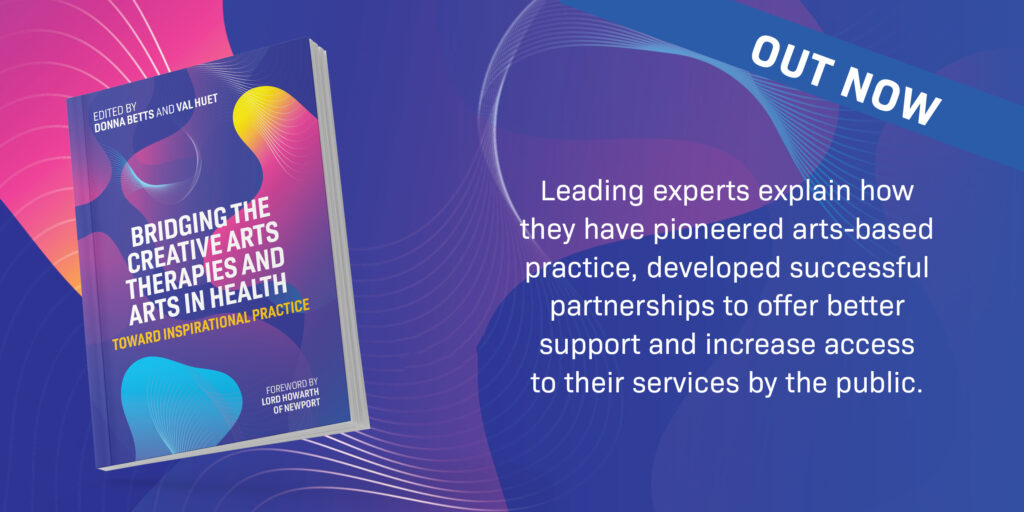
This blog post was written by Co-Editors Donna Betts and Val Huet.
Many significant world events have occurred since we first conceived of this book: the pandemic, conflict in Ukraine, and impending recessions. The coronavirus has affected us on a global scale as we’ve faced lockdowns and social isolation. Many people have turned to the arts and creative activities as an outlet, offering a bridge to connect with others, even if remotely. Our human need for connection and belonging is supported and enabled by the arts—artists, community activists, creative arts therapists, performers—have been reaching out on online platforms to bring hope during these trying times. Many people have responded by (re) connecting to their creativity and we’ve seen a flourishing of many arts forms, from online life drawing to crocheting circles producing amazing covers for post boxes.
The chapters in this book reflect the meaningful impact of the arts in people’s lives around the world and several reflect on learning from the pandemic. As always, when humanity faces a common threat, it responds creatively, and some amazing advances are made in many fields. The level of effort and commitment of the people who make this happen—the artist facilitators, creative arts therapists, practitioners, administrators, and staff—is admirable and inspiring.
The publication of this book coincides with concerning world events: the current conflict in Ukraine is affecting the economy of many countries and recessions have been forecast. Sadly, the arts are often first in line for funding cuts and inevitably, this impacts on arts in health and arts therapies. Provision of the arts in the education system has been paired back dramatically and many projects that support health and well being are facing drastic cuts, at a time when we need these the most.
It is important to recognize and value the many contributions made by individual artists in health and arts therapists who, with open minds and hearts, step out of their respective professional silos and reach across to form creative partnerships. As the chapters in this book reflect, when complex issues of difference and commonality of approaches are explored, the quality of practice is enhanced, which benefits clients and participants greatly. The experience is also enriching and enjoyable for practitioners.
The exemplary programs and collaborations described by our authors underscore the need for increased public awareness of the benefits of the arts and how to leverage these benefits to gain the attention of decision-makers to prompt increased support for and access to these services. In the current world circumstances, this is more important than ever. Perhaps most significantly, this book brings us all together with a message of unification while providing practical information about replacing silos with bridges so that communities can be better served. May you be inspired to join us as we collectively promote the arts for health and well-being.
Bridging the Creative Arts Therapies and Arts in Health: Toward Inspirational Practice is available now!